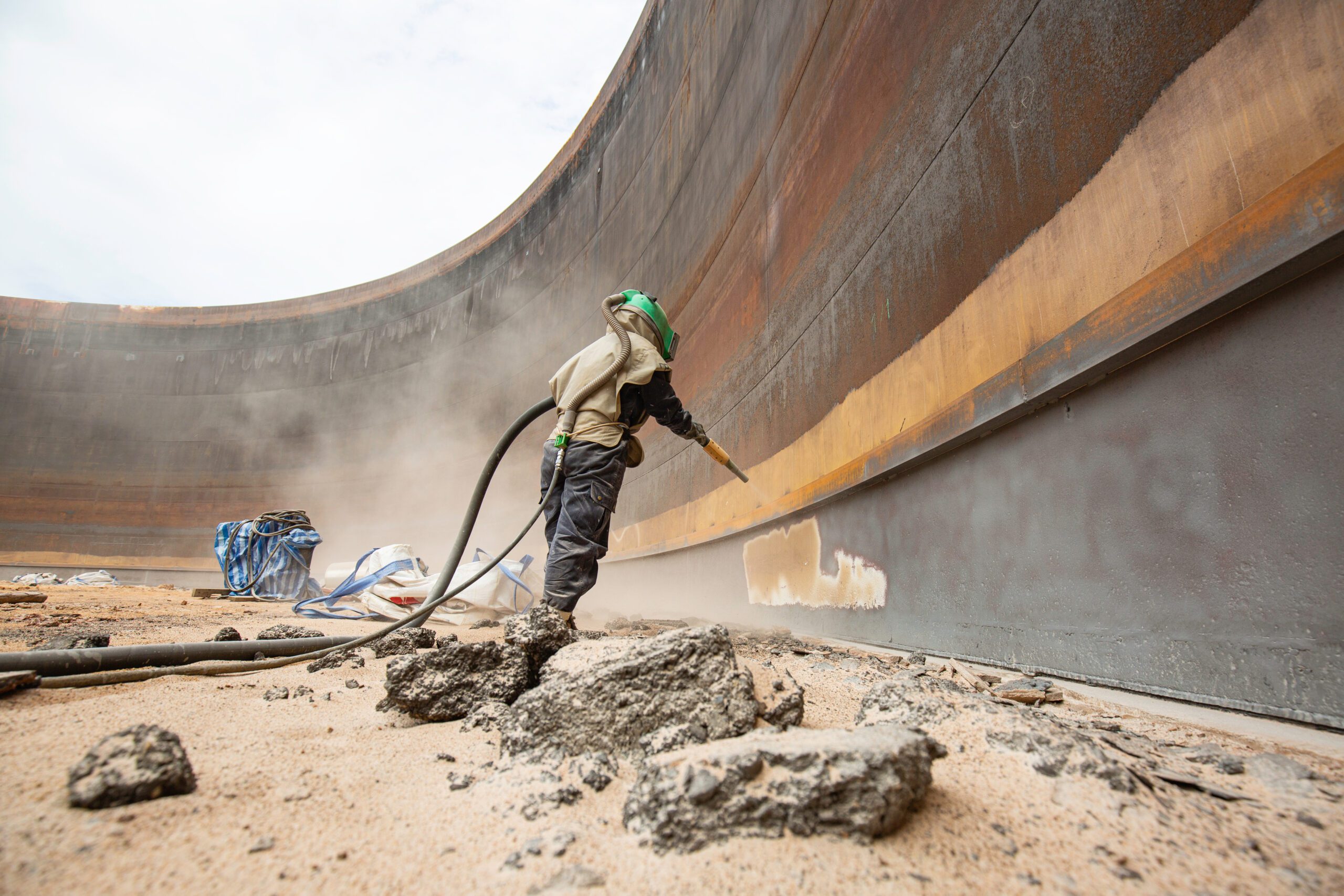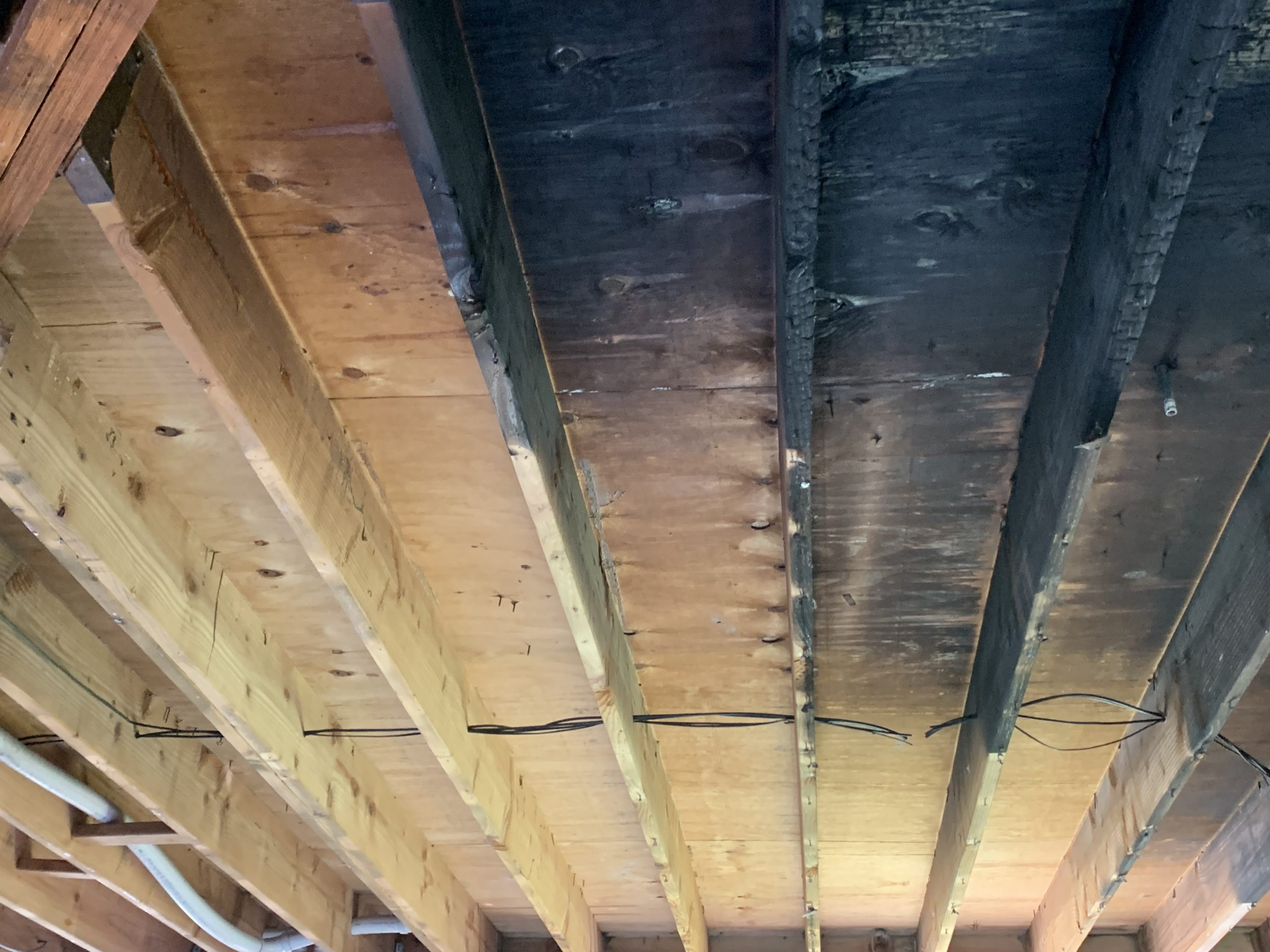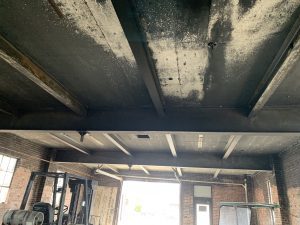Benefits of Baking Soda Blasting
Choosing the right method of blasting can be crucial for a project’s success. Two common types of blasting are soda blasting and sandblasting. Soda blasting and sandblasting have many distinct differences, applications, and advantages and disadvantages. This article will elaborate on many of these differences and better educate you on the processes. Knowing the purpose of each will help narrow the options when it comes to projects to ensure optimal results. While both can get the job done, they do so differently. It’s important to know what these differences are and which method is best suited for your specific project.
SANDBLASTING VS. BAKING SODA: WHICH IS BETTER FOR YOUR PROJECT?
TRADITIONAL SANDBLASTING
Sandblasting, or abrasive blasting, is the process by which sand particles are propelled at high velocities onto a surface using compressed air. This method traditionally uses sand to strip away containments, rust, oil, grime, and other forms of buildup on a surface. Sandblasting is also commonly used during surface preparation.
Over the years, however, alternative media has been introduced in place of sand. Sand has been found to cause silicosis and can be harmful to the lungs if inhaled. Alternative media such as glass beads and walnut shells, to name a few, are now an option.

Abrasive blasting has been used for many different purposes including preparing factory equipment for painting and stripping of heavy buildup. This method of basting is generally preferred for industrial applications and is known to be more effective than baking soda for removing tougher contaminants. Heavy industrial jobs need the power of sandblasting to get the job done efficiently. Sandblasting is considered fast, cost-effective, and efficient.
However, given its abrasive nature, sandblasting can actually etch or warp surfaces if not used correctly. Sandblasting also does not sanitize or remove odors like soda blasting would. Sand can also pose a threat to the environment if not properly disposed of. Not to mention, there are many health risks involved with traditional sandblasting. As stated earlier, inhaling or breathing in the silica dust can cause silicosis, a type of lung disease caused by breathing in tiny bits of silica. The nature of sand used for sandblasting comes from the idea that it was cheap and easily accessible. One might consider now that “cheap” doesn’t always imply quality. In order to adapt to OSHA standards, Blast it clean opted out of using sand and instead uses environmentally friendly abrasives that are free of harmful chemicals such as baking soda.
BAKING SODA BLASTING

Soda Blasting originates back to the 1980s during the renovation of the Statue of Liberty. A new process was needed that would quickly clean the interior of the statue without damaging the metal structure. The statue was scheduled to be re-dedicated on July 4, 1986.
Since the 1980s, new and innovative processes for blasting have continued to evolve. Using custom equipment and specially formulated baking soda, we are now able to clean virtually any surface without damaging it. It’s amazing how far we’ve evolved since then.
Soda Blasting uses sodium bicarbonate, commonly known as baking soda. Sodium bicarbonate is biodegradable and makes for an environmentally friendlier choice. It is specifically granulated to smoothen out the surface and take off any contaminants. Baking soda involves the process of propelling baking soda particles onto a surface using compressed air. Due to its soft and non-aggressive nature, soda blasting is often preferred for delicate surfaces where minimal etching or damage is desired. The baking soda tends to shatter immediately on impact.
Since sodium bicarbonate works as a natural deodorant, soda blasting can also be used to remove mold and smoke damage. Think of it as if you were putting a box of baking soda in your refrigerator. The alkaline nature of baking soda can neutralize acidic odors. This makes it a good choice for fire restoration jobs. Baking soda is water-soluble, non-toxic, and non-hazardous. This means it won’t build up in the soil or residential areas. Soda blasting also doesn’t create heat which means there’s no risk of warping the surface. Soda blasting can remove grease and paint faster and prevent future rust from occurring. Although baking soda can be safely inhaled, it isn’t advised and proper personal protective equipment (PPE) is still required. Nonetheless, soda blasting is certainly much safer than sandblasting.
Because this media is less abrasive, soda blasting might not be effective for tougher jobs like removing heavy rust from multiple paint layers. The labor and cost that comes with soda blasting can be more expensive than sandblasting. Because baking soda shatters into powder at the end of the blasting process, it can only be used once and makes the cost of soda blasting higher than sandblasting. However, what it lacks in cost efficiency, can make up for in-time effectiveness and environmental effects. At Blast It Clean we recognize that time is money.
SO WHAT IS THE DIFFERENCE?
As mentioned earlier, the most critical difference between sandblasting and soda blasting is the abrasive material used. Sandblasting is more aggressive than soda blasting, making it the perfect method for removing layers of complex substances such as concrete and steel. Meanwhile, soda blasting is much less abrasive, making it an ideal choice for delicate surfaces such as glass, plastic, and wood.
Another difference to point out is the cleanup process. Sandblasting generates enormous dust and matter, making it hard to clean up. This can generate problems including respiratory problems as mentioned above. On the other hand, soda blasting does not create dust or hazardous materials, making it eco-friendly and easy to clean up. The residue from soda blasting is water-soluble and can easily be wiped away.
When deciding between sandblasting and soda blasting, it’s essential to consider the cost. Sandblasting is typically less expensive than soda blasting, however it can be more harmful. When stripped down to their core, both processes can be beneficial in the removal of rust and dirt from various surfaces.
SURFACES THAT BENEFIT FROM BAKING SODA BLASTING
With more and more applications being found all the time, the uses for baking soda blasting are almost innumerable. Baking soda is a popular media selection for a majority of our customers because it is gentle. This gentle medium makes it more applicable on delicate surfaces such as canvas, damaged or untreated wood, historic brick, fabric, plastic, and sometimes even glass when it’s properly applied.
It’s also important to note before going further, the uses of baking soda blasting. Blast It Clean has used baking soda cleaning to assist in:
- Food Production Plants
- Fire Restoration
- Mold Remediation
- Airplane Parts
- Paint and Graffiti Removal
- Automobile Restorations
- Parts and Equipment Cleaning

Baking soda blasting is especially useful in disaster and fire restoration. It can remove soot, char, and other residues from damaged wood after a fire. Restoration services are performed on any interior or exterior surface. It is a perfect abrasive for delicate structural materials such as wood that may have been stained from soot and char. Besides the physical damage, a fire can leave behind an odor, The particles and odors will settle into surfaces or cracks and are hard to remediate.
Soda Blasting can also do the same thing with mold removal. It can kill mold spores, remove mold growth, and absorb the odor. Removing corrosive materials or residue can be time-consuming and costly for industrial manufacturers. Soda blasting can be an efficient and effective method of removing and deodorizing your industrial facility. Because soda blasting is less abrasive, it also makes it less aggressive against fragile structures like historic bricks, sculptures, and fine metals. Soda blasting can be beneficial on any surface if it is delicate and doesn’t require a hard abrasive blasting like traditional sandblasting.
ENVIRONMENTAL BENEFITS OF BAKING SODA BLASTING
Sodium bicarbonate is also known as baking soda which is a common household product. This non-toxic, food-grade material is 100% water soluble and environmentally safe. Because the soda particles naturally break down over time, any residual that is left on the surface is not said to be harmful to the environment or pose any health risks. This means that baking soda blasting is safe in residential, commercial, and industrial facilities.
Soda blasting also produces very little waste compared to other methods of blasting. There is no need for additional cleanup since the particles disintegrate upon impact. Baking soda blasting is FDA-approved and therefore does not give off toxic chemicals or harmful by-products. This means there is no hazardous waste to dispose of. Soda blasting will naturally clean surfaces without causing damage or compromising the structural integrity. Soda blasting contributes to longer material lifespans, minimizing waste and future problems from occurring.
CHOOSING WISELY: EXPLORING THE DYNAMICS BETWEEN SODA & SANDBLASTING WITH BLAST IT CLEAN
It is clear that soda blasting is the more flexible option when compared to sandblasting. Blast It Clean provides a nationwide baking soda service that is efficient in our cleaning processes. We look for opportunities to bring a return on your investment when working with us. Our team has extensive experience in mold and odor remediation with baking soda blasting. The use of baking soda has been found to be the most efficient in deodorizing and neutralizing odor from a fire restoration project.
“Blast It Clean did a great job removing the charring on the wood structure and soot on the concrete. Crew worked fast and efficiently. Cleaned up the job site once they were complete. I've used them on multiple jobs and will continue to” - jesse c
Baking soda blasting can be used for more than just a deodorizer. Blast It Clean will partner with industrial manufacturers to clean equipment and parts that require a more gentle medium. An analysis of the harshness required for blasting is considered to find the best solution for you. Blast It Clean can keep your equipment in top operating condition and reduce hazardous build-up.
 Our soda blasting capabilities also helped to restore the Fort Scott Wastewater Plant after a fire. Soda blasting was needed to blast 7,624 sq ft of area that had sustained fire damage. The remaining soot, char, and odor needed to be removed from both the interior and exterior walls. Blast It Clean was proud to be able to help restore the facility. The end result was a clean and fresh building.
Our soda blasting capabilities also helped to restore the Fort Scott Wastewater Plant after a fire. Soda blasting was needed to blast 7,624 sq ft of area that had sustained fire damage. The remaining soot, char, and odor needed to be removed from both the interior and exterior walls. Blast It Clean was proud to be able to help restore the facility. The end result was a clean and fresh building.
Deciding which type of blasting is best depends on the intent of the blasting, the type of job, the desired finish, environmental considerations, and the kind of materials used. Soda blasting works better for softer material while sandblasting is better used for industrial-level tasks that require a tougher blast. As the abrasive blasting industry evolves, new practices will be key to achieving optimal results. Whether it's the gentle touch of soda or the might of abrasive blasting, each has its place.
Our clients trust us as a partner to keep their facilities operating efficiently. We create solutions that give you the ease of mind. To get the best results, it's essential to use a reliable blasting service with the experience and equipment to do the job correctly. Let us help you.
